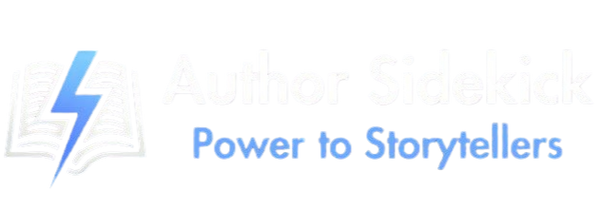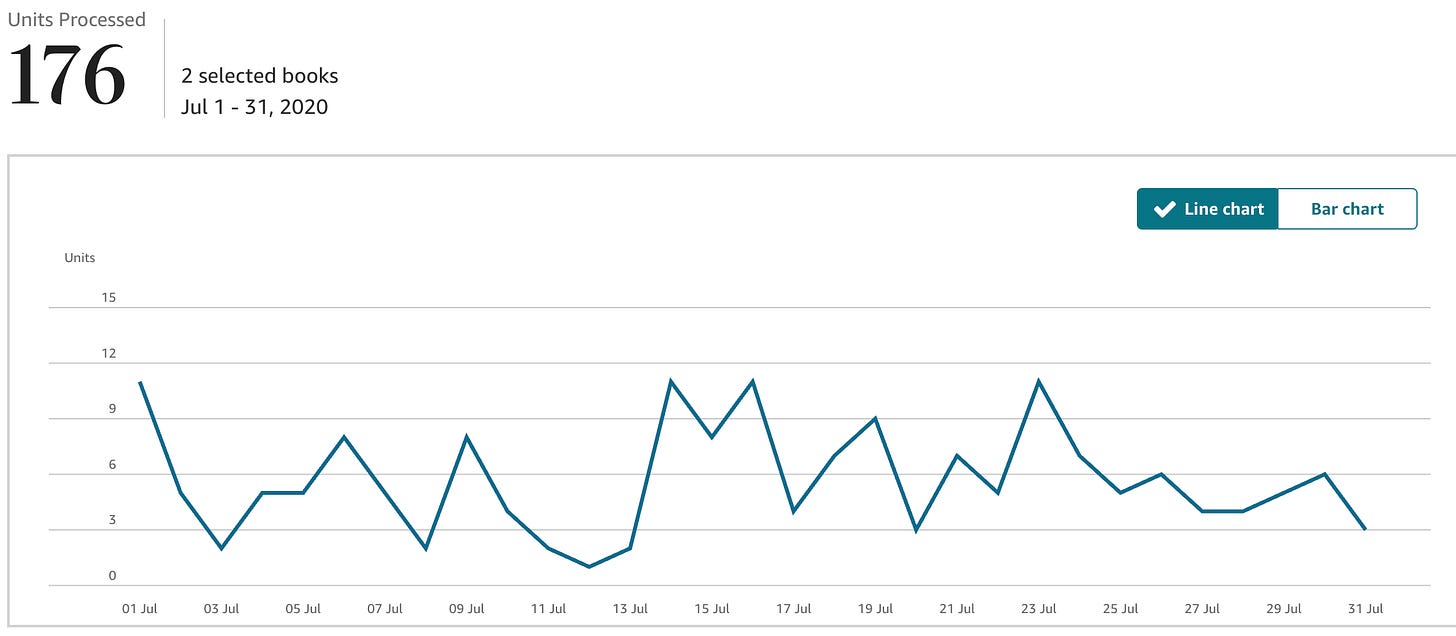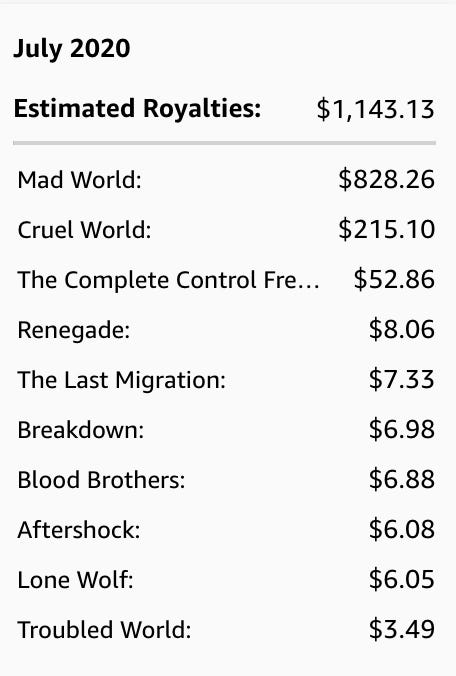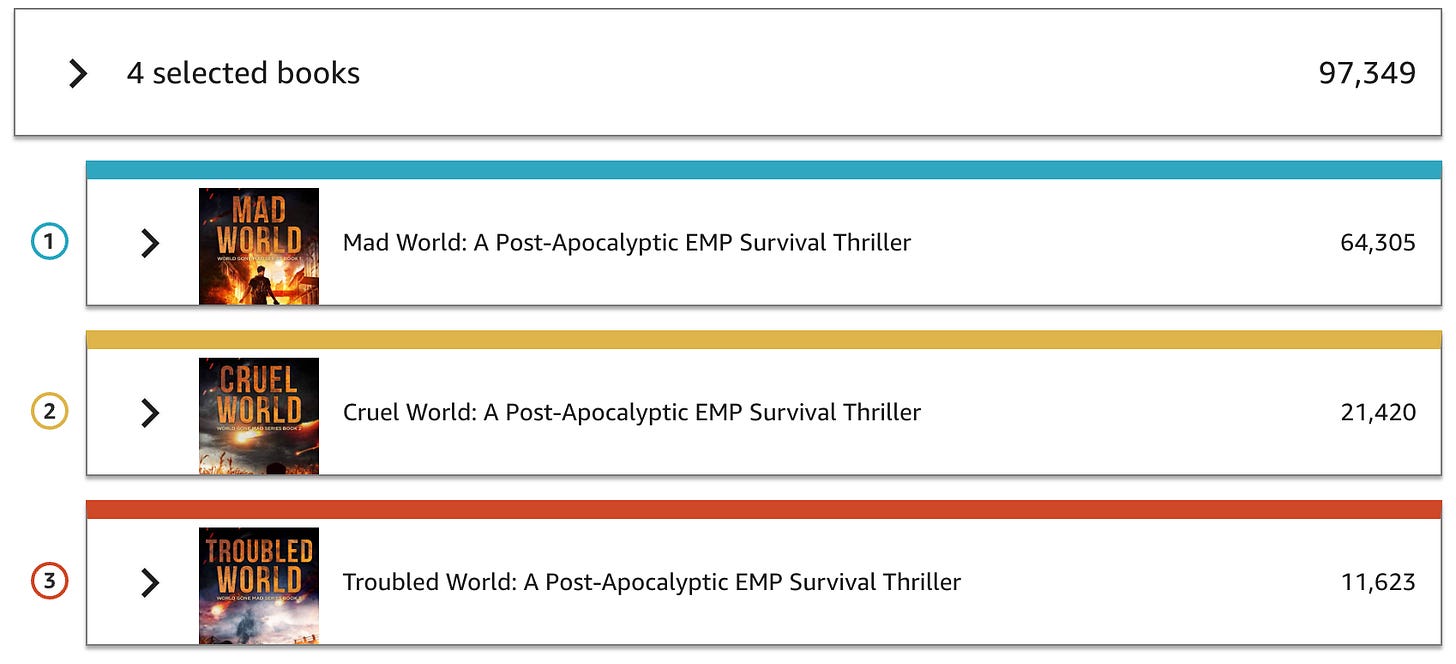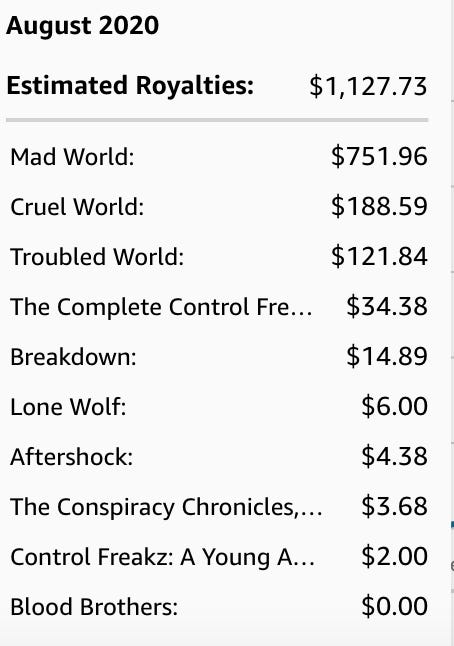Day 3 of 5 | Author Marketing Superpowers Bootcamp
Share

Complete All 5 Days of Challenge 🏁
Life was really good. In Day 2 of the Author Marketing Superpowers Bootcamp, we left off, and I had sold 99 pre-orders of my book before it even launched.
Well on my way from story idea to $1,000 in book sales! Although I launched my book into Kindle Unlimited, the lesson I’m about to share with you applies to all stories published anywhere.
This is Day 3 of 5 of the Author Marketing Superpowers Bootcamp. You can complete Day 1 here and Day 2 here. Now that you have decided your target audience and sold your story to them before you wrote it, it’s now time to write a story that engages your readers.
The goal for this bootcamp is in <5 minutes a day to help you take a story idea to $1,000 in book sales and beyond with as little stress, time, and money as possible. I created this bootcamp to make the Author Marketing Superpowers even more accessible and easy to use.
Picking up where we left off👇
When book 1 in my new series launched, I scaled my ad spend to $50 per day. My book was sitting pretty between 6,000 and 10,000 rank in the Kindle US Store each day for months.
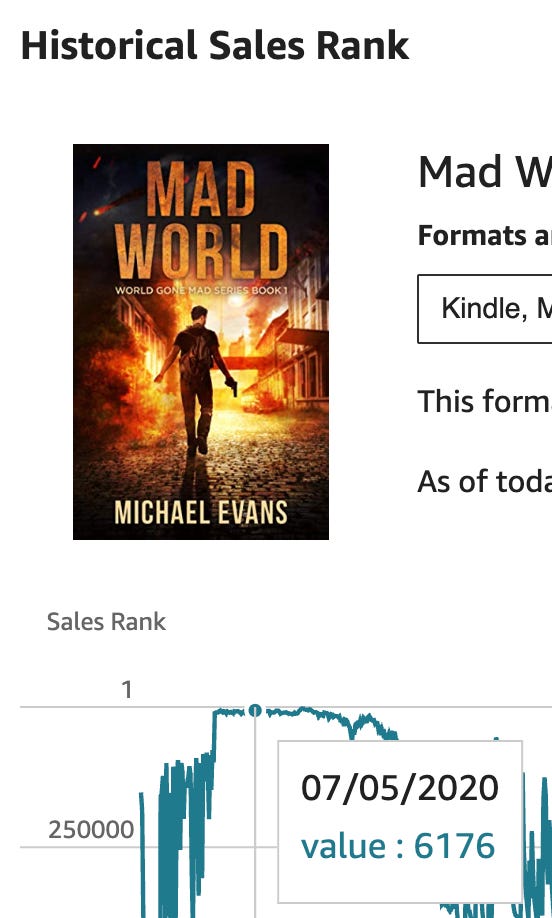
I was selling on average 6 copies of my book at $3.99 per day. After Amazon’s fees, I was making on average $16 in sales on book 1 each day.
To spend $50 and get $16 back doesn’t sound like that great of a deal. But this was only on the sales of book 1.
My book was enrolled in Kindle Unlimited. Actual book sales are just one slice of the pie. For many authors in my genre KU page reads made up well over 60% of their income.
Amazon doesn’t tell authors how many downloads we are getting in Kindle Unlimited.
Instead, they share with us the page reads we get in Kindle Unlimited.
This is frustrating. It makes it hard to understand if our marketing is converting to actual readers. Luckily, we have calculators like this one from Kindleprenuer, that help us estimate our total book sales + KU downloads based on our sales ranking.
Based on my average sales ranking, I estimated anywhere from 15 to 24 total sales + KU downloads per day. For me this meant I was getting on average an extra 10 to 12 downloads into Kindle Unlimited per day. Since my book would make roughly $2 per full read-through in Kindle Unlimited (since KU pays out based on how many pages your book is), I expected that I would be making around $35 per day off book 1.
I was ecstatic.
With a 5 book series planned, it was easy for me to see how I could turn my $50 day ad spend into $100 or more in revenue. I was furiously writing book 2, 3, and 4, waiting for the cash to roll in. I imagined each new book in the series would add an additional $20 in revenue per day. By book 2, I would be making a profit! By book 4, I’d be making what was life changing money to me (roughly $1,000 a month in profit).
All the meanwhile, I kept spending $1500 a month on ads. At the time, I was a broke teenager. COVID had made it impossible for me to go to my serving job, and I was also busy getting ready to attend my first semester of college.
All of this to say, I didn’t have a massive war chest of money hanging around. I was spending $1500 a month, and I needed it to pay off.
By the end of July 2020 (100 days after I started this radical experiment in mid-March), I was getting worried.
I knew readers didn’t read through the series immediately. It took time after someone downloaded a book into Kindle Unlimited to read it and see the page reads reflected in my sales dashboard.
This is what my page reads looked like for the month of July for my book Mad World.
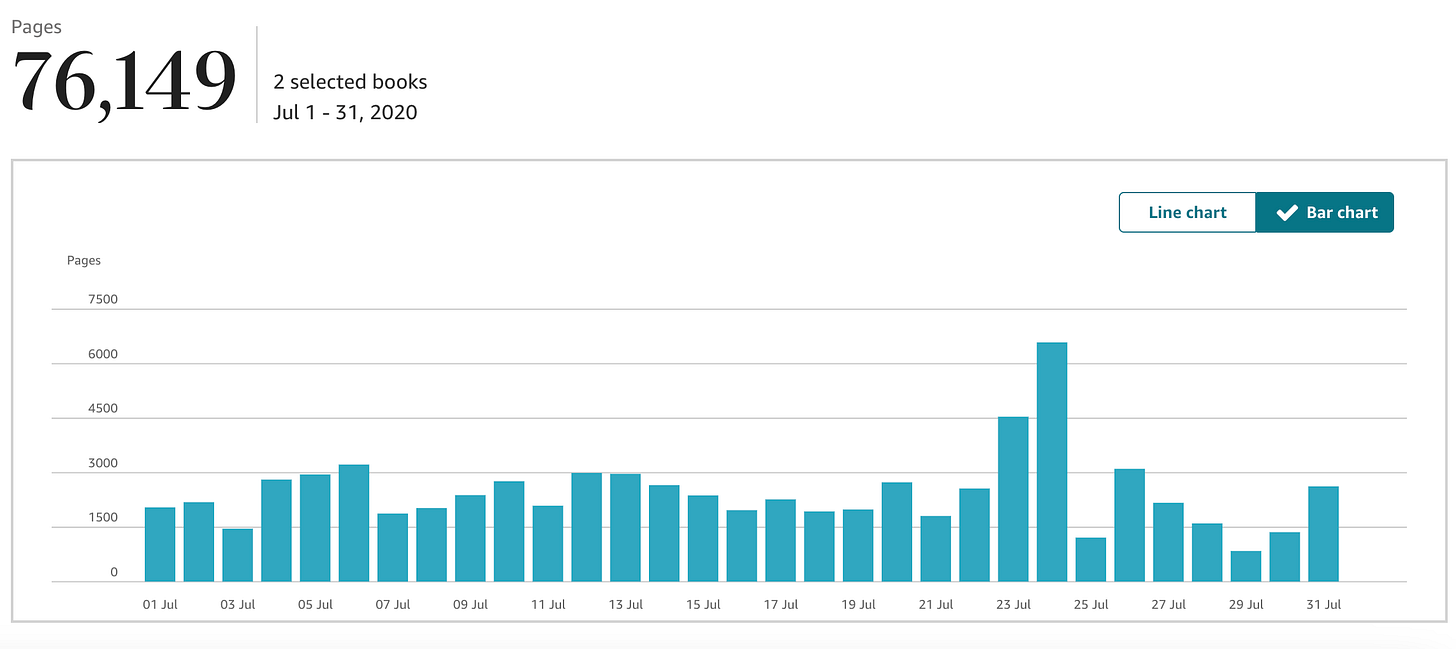
Based on my KENP, I was getting about 200 full read-throughs a month or just over 6 read-throughs a day. This meant my revenue from book 1 was a bit under $30 a day.
This was less than I wanted, but not catastrophic.
I thought, maybe this is just the “normal” page reads at my sales ranking.
Then a red flag started to emerge. The second book in my series was released at the beginning of the month of July. It was slightly longer than the first book. Despite this, it didn’t even get 1/3 of the page reads of book 1 during the month of July.
This is what my revenue looked like for July on a $1,500 Meta Ad Spend (this counts income from page reads and book sales).
Sheesh.
I was barely making over one quarter of the revenue on book 2 that I made on book 1.
With the occasional sales of my other series, my loss for the month wasn’t too drastic, but it was far from ideal.
I told myself it would all be okay.
Sure, this is less read through than I expected. But by book 5, I’d still be making a decent profit. And then, when I threw in audiobooks, I still might be able to get to $1,000 a month in profit once I completed the series.
Then, August rolled around.
I had launched my third book in the series at the beginning of the month.
Here’s what my page reads looked like for August:
And here’s what my overall revenue looked like for August (this counts income from page reads and book sales):
Yikes. Some of my ads had gone stale and converted at a slightly lower rate (about 10% to 20% less month over month). A drop like this isn’t catastrophic, but I saw yet another massive drop off in readership between book 2 and 3.
At this point, I was getting burned out.
This experiment between editing, covers, and ads had yet again cost me. And despite the fact that I managed to finally get the dopamine rush of a respectable sales ranking and decent revenue, I was not making a profit and didn’t have a clear pathway to doing so.
At this point, my best-case scenario was maybe making a couple of hundred dollars a month after finishing all of the books in the series. And if my ads had a bad month, I could easily see a loss for the month instead.
The stress just wasn’t worth it.
I was burnt out and felt defeated.
I turned off my ads. And I turned to YouTube, focusing on building a career as a livestreamer and lifestyle vlogger for the next year. That was my first business venture to turn a profit, but the story of how I managed to make thousands of dollars a month roadtripping America playing manhunt and scavenger hunt is a story for another day.
What you need to know is this: you can’t scale your readership until you engage your readers first.
Despite us needing to sell our story before we write it, there’s a difference between selling 100 pre-orders and getting validation that you can sell 1,000 more rather than actually selling thousands and thousands of your product before you have proved if your story is engaging to your readers.
The truth is that a mistake like this can be catastrophic.
It’s not just about the time and money.
It’s about losing trust with readers who got excited about your story, but ultimately put your book down before finishing because it did not meet their expectations. It’s much harder to get a reader to come back after they had a lackluster experience with your story than to get a new reader to give you a try.
Luckily, we have the Magnetic Powers: Engage Readers to help save us from an epic misfire of this sort.
For Day 3 of the Author Marketing Superpowers Bootcamp, share with us what you did to complete the following steps:
Step #1: Minimum Viable Story (MVS) — when will your story be ready to share with readers who pre-ordered and test your retention?
Your Reader Retention is the proportion of readers who started your story that are still reading your story at a specific chapter or page. Tools like Reader Meter are designed to show your story’s reader retention by allowing you to see exactly where readers stop turning the page on your stories.
Before scaling, it is necessary to see if you have a story with a high-enough reader retention to make marketing it profitable.
An MVS is the moment when you feel you are ready to share your story with readers and see if it’s engaging enough (before you spend thousands of dollars on ads hoping that it is like me 🫢).
The trick here is this… you do NOT have to write your entire story to have an MVS to share with readers. In fact… it’s better that you don’t.

This is where our next step comes in…
Step #2: Retention Point — how will you design an experiment to test where the retention point of your story is and see if readers want to continue past that?
Retention Point is the point of a story that once readers reach they are very likely to finish the book.
Most of the time, the retention point is in the first few chapters of your story (although it varies for every story).

In every story, the first few pages and first few chapters will have a much higher drop-off than the rest of your story. So… at first… your plan should be to write the first few chapters of your story AND then, see if readers are willing to continue past that.
- When Reader Meter releases it’s going to completely revolutionize this process for authors and allow you to do this for every book you ever write or have written (it’s going to be a game-changer).
- In the meantime, or if you prefer not to use Reader Meter, I recommend sending readers who show interest in your story (ideally by pre-ordering it) the first 3 to 5 chapters of your story and include a link at the end of those chapters that readers can click on, enter their email, and then get access to the next 3 to 5 chapters.
- This gives you visibility into exactly who is reading your stories and who is not, and allows you to see roughly what your retention is. Or you can just use Reader Meter when the time comes and get even more granular engagement data + a better reader experience 😉.
Step #3: Power Law — how will you improve your story to become a best-seller? Small improvements in the right part of your story can lead to massive jumps in reader retention, profit, and sales.
The Power Law is the publishing principle that very few books (under 1%) garner almost all of the sales (over half). To climb up the Power Law, your goal must be to create a story that readers both convert to at a high rate (covered in day 2) and engage with at a high rate (this is what day 3 is all about ).
Revise your story to adjust areas where readers are dropping off so you can retain them. If I had focused on revamping the first few chapters of Mad World and increasing their retention, I likely could have made the entire series profitable (it’s on my list to actually test this out as an experiment, with the help of Reader Meter!).

Then, once you complete these steps… you are ready for Day 4 of 5 of the Author Marketing Superpowers Challenge.
Day 4 is all about creating your own Reader Growth Engine and will likely change how you think about marketing books forever. Subscribers to Author Sidekick Plus even get access to a free 2-hour masterclass on the Reader Growth Engines. You can check that out here 💙.
In the meantime, don’t forget…
Together we are boundless,
Michael Evans
The Author Sidekick
